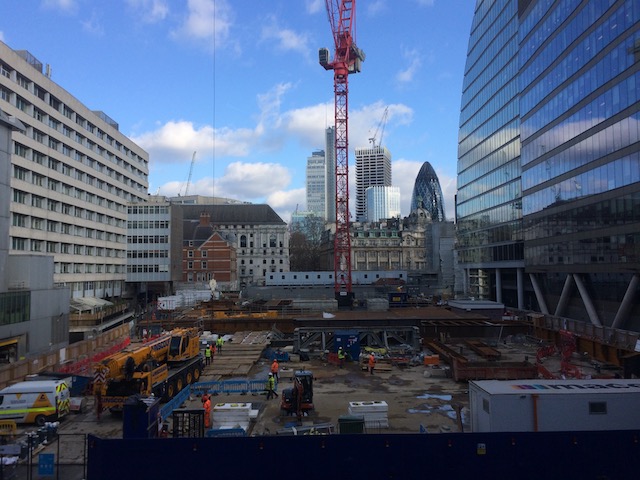What if, every time we designed a building, the world got better? This post explores the transformative potential of regenerative design, a paradigm shift from construction that contributes to carbon emissions and ecosystem destruction, to one that leave people and planet in better health.
Whereas sustainability seeks to limit damage, regenerative design aims to return human and living systems to a state of thriving within the limits of the planet’s boundaries. It’s a process akin to healing, requiring attentive listening, a holistic approach, and mindful consideration of all affected places, including the often-overlooked ‘Second Site’ of material sourcing and manufacturing. The post argues for a need to reevaluate scale and focus, suggesting that like patient care, construction should focus on individual attention and localized interventions, forming a mosaic of healing actions. This vision calls for a systemic transformation, reimagining the construction industry as a nationwide, network of specific, place-based healing processes, tailored to meet the unique needs of each environment.
What if, every time we designed a building, the world got better? Not just in the place we build it, but in all the places affected by its construction. That would be the opposite of what happens at the moment. Construction is a significant contributor carbon emissions and ecosystem destruction. But what if building things could do the opposite? Instead of causing damage at a global scale, causing the world to get a bit better, every time. Then we would shift construction from a paradigm of destruction to one of healing.
That is what regenerative design seeks to do. Whereas sustainable design aimed to limit damage and impact on future generations, regenerative design seeks repair the damage done and to make things better. As James Norman and I set out in our book, the Regenerative Structural Engineer, the goal of regenerative design is for human and living things to survive, thrive and co-evolve.
Regenerative design represents a big difference in what we think of construction as being for. It shifts it from simply about building things (safely and profitably), to construction being a process of repairing damage and contributing to the thriving of all living things, not just humans, in our ecosystem. Through regenerative design, construction becomes an act of healing.
To see construction as a healing process requires us to make a profound shift in outlook. I find thinking of medicine as a useful analogy for understanding what this process looks like.
Start by listening – the process of healing starts with listening. Observing the patient and asking of lots of questions to build up a rich picture of the patient’s health. If this is rushed, symptoms can be missed. The process may be proscribed; it can also be intuitive. The process can also take time – initial observations may be incorrect; other symptoms take time to surface.
In the Regenerative Structural Engineer, James and I propose a process we call continuous, place-based design. This process deliberately begins with deep observation of place, because we need to really understand the patient before we start to act.
Take a holistic approach – doctors typically aim to treat the whole patient, not treat the nose to spite the face.
Again, in our book, we introduce the idea of the ‘Second Site’, meaning all the places that the construction of a building affects. The places that materials are mined from, the ecosystems affected by the pollution of manufacture, the community of people working in the supply chain. It is in this Second Site that a significant proportion of our damage is wrought. It is no good talking about healing on site if we are creating destruction on the journey to site.
That our supply chain has become such a complex web makes assessing the impact on this second site very difficult, but construction cannot begin to heal until it brings this second site into scope.
A question of scale and focus – destruction is most-efficient at large scale. Healing, however, generally requires individual attention.
To help us understand this dichotomy, economist and ecologist David Fleming provides an insightful explanation of the appropriateness of scale for different sorts of activity. As he describes, processes that involve mixing are more efficient at large scale; processes that involve sorting are more efficient at small scale. So bread making is more efficient in a baker’s kitchen than in a hundred different domestic ovens; recycling is more efficiently sorted in people’s homes than in enormous waste recycling plants.
Essentially the acts of mixing together, smashing up and breaking, requiring little specific attention, can be sped up by scaling up. But the acts of assessing, unpicking, sorting out require a great deal of attention.
Even though we have national-scale health service in the UK, the act of patient care begins a direct relationship between patient and doctor. The national health service is a country-scale mosaic of individual patient-doctor relationships.
This gives us a clue to how a regenerative construction industry needs to be organised – not through large-scale indiscriminate, systems of supply that are well suited to causing destruction; but through a vast web of smaller-scale interventions intensely focused on healing. Local focus at a national scale.
In systems thinking, a system is optimised to meet the goals it creates. Currently, our construction system is optimised for destruction since that is what it is creating. If we want the goal to healing, we should expect that the system will look very different.
Seeing our work has a healing process – structured around creating specific care rather than creating general damage – can help us to reimagine what a regenerative construction industry might look like.

